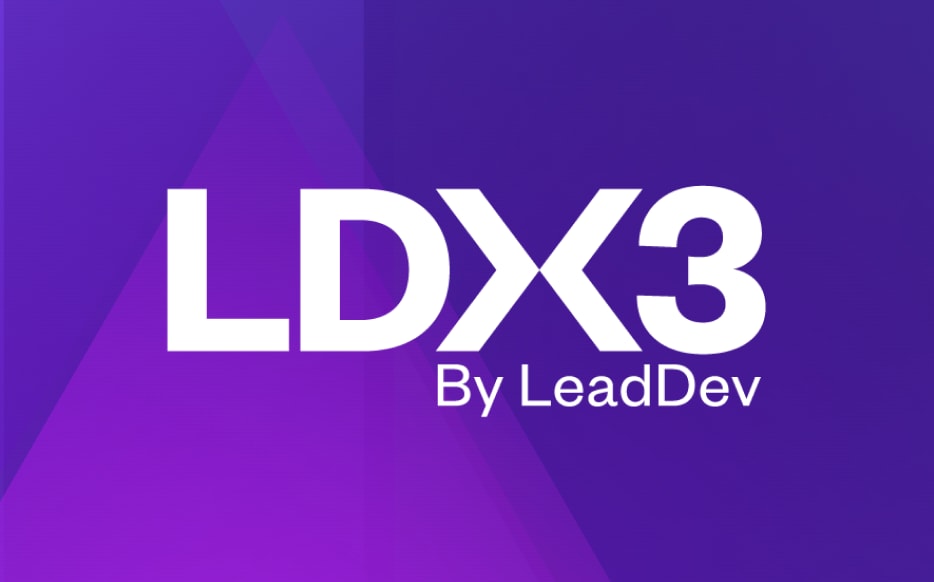
Latest
-

OpenAI report: Enterprise AI is still in the “early innings”
Insights into AI usage from 1 million business customers.
-
Why Zig is moving on from GitHub
A scathing review has broader implications for AI use by major platforms.
-
 In partnership with Harness
In partnership with HarnessFrom Feature Flags to Measurable Impact
In this workshop, you can actively experiment with and benchmark your organization’s level of maturity.
Editor’s picks

London • June 2 & 3, 2026
Rands, Nicole Forsgren,
& Matej Pfajfar confirmed
Essential reading

How to build an effective technical strategy
Building a tech strategy requires a lot of moving parts. Learn about what routes to take and whether decisions should be top-down.
On our Technical Direction playlist

Modernizing legacy systems: A technical strategy for evolving monoliths into modern architectures at HelloFresh
Gain insights into transforming legacy systems into scalable architectures, with practical strategies for balancing stability, managing technical debt, and enabling growth opportunities at HelloFresh.

Technical Vision vs. Technical Strategy: The difference and why it matters
Jonathan Maltz digs into the nuts and bolts of setting a successful technical strategy. Startin by talking about the difference between technical vision and technical strategy.

How to implement platform engineering at scale
In this webinar, we’ll hear from enterprise engineering leaders who’ve overcome cultural barriers and team silos, and successfully adopted platform engineering practices in their orgs.

Good technical debt
Jon Thornton discusses how this framework was used to rapidly build and ship Squarespace’s Email Campaigns product in less than 15 months. Along the way, you’ll get several practical guidelines for how tech debt can supercharge your technical investments.

Creating, defining, and refining an effective tech strategy
Having a defined tech strategy creates alignment and keeps everyone on the same page. So how can you ensure yours is most effective? Panelists Anna Shipman, Randy Shoup, Papanii Nene Okai, Nimisha Asthagiri and Anand Mariappan share their tips.
More about Technical Direction
-
Measuring and improving the efficiency of software delivery
Which metrics are right for your organization?
-
Managing technical risk
Understanding the motivations behind an engineer’s desire to affect your tech stack
-
Conversations you need to have before moving from monoliths to microservices
Are you making the move for the right reasons?
-
Embracing simplicity in your engineering team
The prevention of inherent, project-lifecycle-induced, and self-inflicted complexity
-
Gathering requirements: techniques for building a solid backlog
Leverage domain knowledge to establish a foundation for your projects
-
Achieving speed and quality without sacrifice in engineering
Combining curiosity and focus to unite two traditionally opposing forces
Top Technical Direction videos
-

Reducing infrastructure cost during development and in production
Sally shares lessons learned from her experience at different companies to reduce costs from the product development stage to running a service in production.
-

Building products is a team sport: Cultivating effective engineering-product partnerships
With new AI developments happening almost every day, team roadmaps evolve fast to adapt to the product and business needs; this requires a close partnership between engineering and product leaders.
-
 In partnership with Harness
In partnership with HarnessDoes your org need platform engineering?
The panel digs into what the approach looks like in practice, and ask whether platform engineering really holds the key to unlocking happy and productive teams. You will leave this session with a better understanding of what platform engineering really is, how it relates to developer happiness, and whether it’s the right route to go down for your org.
-
 In partnership with Chronosphere
In partnership with ChronosphereMaking cloud native work for your org
How can enterprises make the leap to cloud native? What do they need to know?
-

AI and the future of software engineering
Hywel Carver talks focuses on the shape of engineering teams and how they work – including how they have changed over time with the advent of Agile and DevOps – and suggest how this will change as AI-generated code becomes mainstream.
-
 In partnership with DoiT
In partnership with DoiTDesigning the best cloud architecture for your org
What are the essential components for designing the best cloud architecture for your org?



